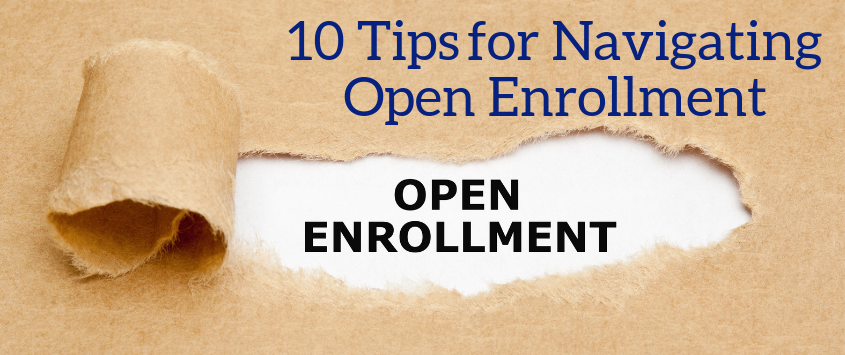10 Tips for Navigating Open Enrollment
Beginning each fall, many employers kick off their open enrollment period. This is a time when employees have the opportunity to enroll in — or make changes to — their health insurance benefits. As the open enrollment season approaches, now is an excellent time to review your current health insurance coverage, determine what benefits or funds you have left to use before the close of the coverage year, and consider your insurance needs for the upcoming year.
Basic Information Required
If you are a new benefits enrollee or if you are making changes to your medical coverage, you will need some basic information for the family members you wish to cover. You will need to have Social Security numbers and birthdates of the family members you will be covering. Additionally, if any of your family members are covered by secondary health insurance plans, you will need to have those policy numbers and the name, birth date, and Social Security number of the policyholder.
Current Providers and Medications
To accurately compare your current coverage with the insurance plans you have to choose from during open enrollment, make a list of the names of your current healthcare providers. Include doctors, specialists and hospitals or healthcare systems for each family member to see if they are included in your employer’s benefit plan network. Also, gather a list of regularly-taken medications for each family member – the name and dosage – as well as the name and address of your preferred pharmacy. Knowing your co-pays and other out-of-pocket costs will be key to determining the correct plan for you and your family.
Summary of Benefits
Review the benefit plans’ summary of benefits and comparison tables if more than one option is available to you. Be sure to compare the procedures and medications that are covered, and not covered, by each plan. Also consider each plan’s level of coverage for preventive care, such as annual physicals, mammograms and well-child visits.
Cost Comparison
Estimate how much you can afford to spend on healthcare in a year and compare the premiums, deductibles and co-pays. Then, total what you spent in the previous year on doctor visits and medicine. Remember to list annual or seasonal doctor visits and treatments for chronic conditions like asthma, as well as behavioral health costs for therapy or counseling. If your records are inaccurate, use an online healthcare cost calculator to help you estimate your spending.
Also consider co-insurance costs (for health insurance plans that have separate prescription drug plans), and your annual spending using your medical savings account (MSA) or flexible spending account (FSA). To predict your MSA/FSA spending for the coming year, total your costs for over-the-counter medications, chiropractic care, vitamins/supplements, and alternative medicines and treatments. If your unused MSA/FSA funds don’t roll over, be sure to use them before your spending deadline.
Could you use some assistance making decisions about the costs of healthcare during open enrollment season and how it can impact your other financial needs? An excellent resource is an experienced accountant like those at Donohoo Accounting Services. Schedule a free consultation at 513-528-3982 or email us today.







